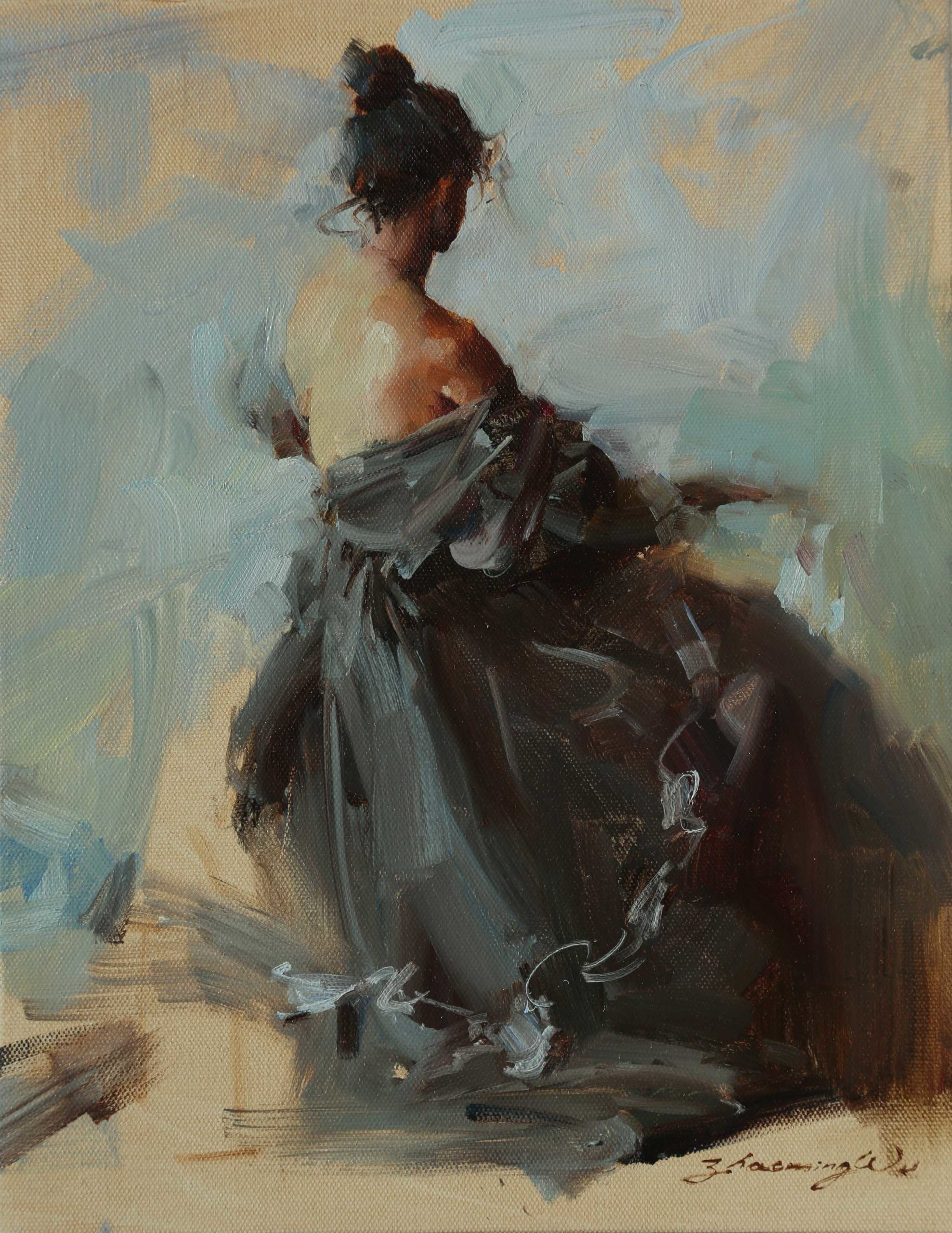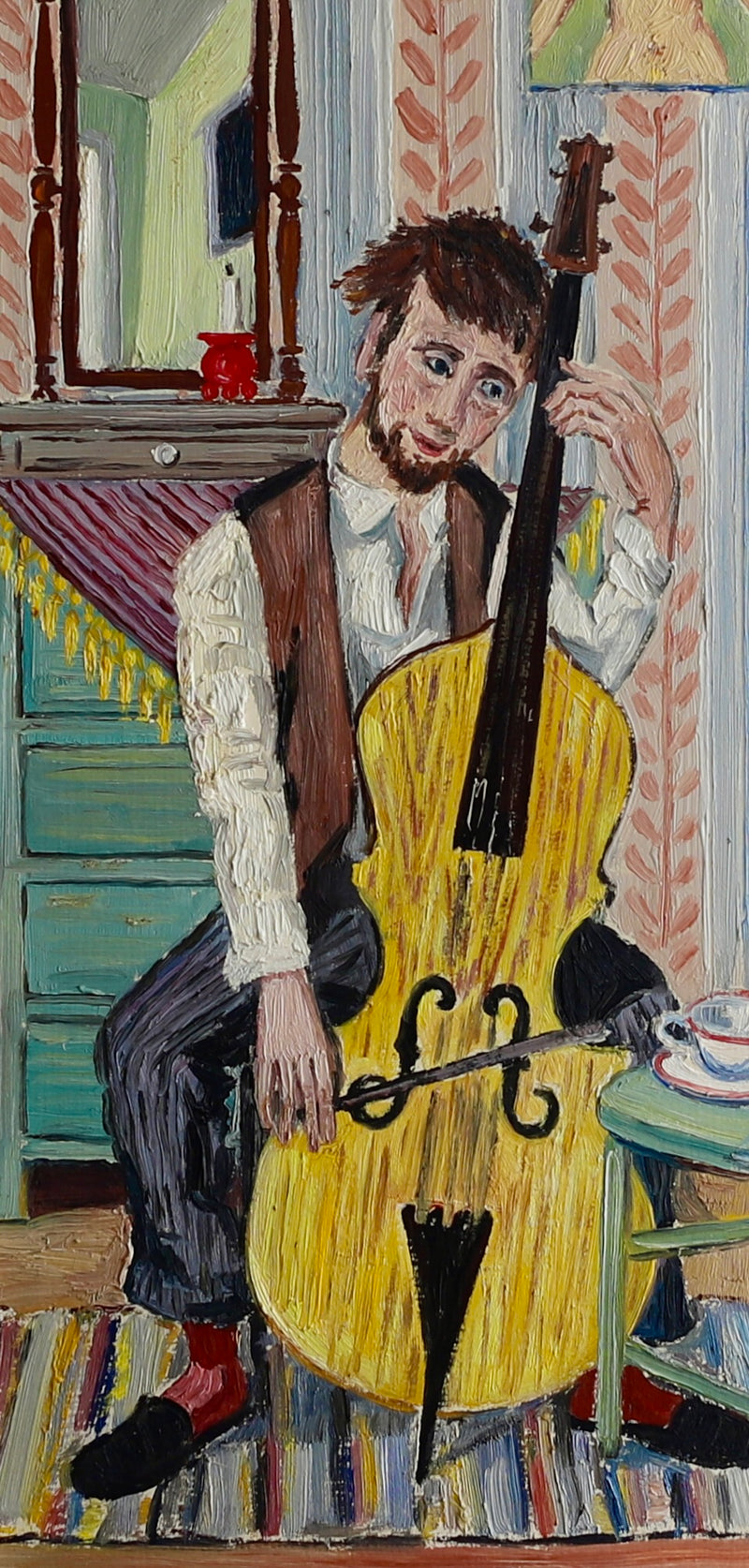The Evolution of Metaphorical Oil Painting: Recognizing Its Historic Importance and Modern Interpretations
The advancement of metaphorical oil painting serves as an engaging lens with which to analyze the interaction in between creative expression and historical context. Contemporary artists, drawing from this abundant heritage, are currently reinterpreting the human number in means that test standard stories.
Beginnings of Metaphorical Oil Paint
The beginnings of figurative oil paint can be traced back to the early Renaissance in Europe, specifically in the 15th century. The growth of oil paint allowed for greater depth of shade and information, boosting the realism and vibrancy of their work.

In this transformative period, figures were typically illustrated within contextually rich atmospheres, showcasing not only their physical qualities yet additionally their mental states. Pioneers such as Jan van Eyck and Titian took advantage of the tool's versatility, using layering techniques to accomplish luminance and texture. This innovation assisted in the representation of elaborate fabrics and the nuances of skin tones, adding to the growth of portrait and narrative scenes.
In Addition, the Renaissance emphasis on humanism fostered a recognition for uniqueness, which in turn affected musicians to produce more relatable and dynamic numbers - figurative oil painting. Because of this, metaphorical oil paint became an effective automobile for storytelling and emotional involvement, preparing for future imaginative movements and designs
Key Historical Activities
Significant historic movements have shaped the development of figurative oil painting, each adding distinct viewpoints and techniques that broadened the tool's opportunities. The Renaissance noted a pivotal minute, stressing realistic look and the human type, with artists like Leonardo da Vinci and Michelangelo pushing the boundaries of anatomical precision and point of view. Following this, the Baroque period brought dramatic contrasts of light and darkness, exhibited by Caravaggio, who instilled spiritual themes with extreme emotionality.
The 19th century introduced Romanticism and Realistic look, where artists such as Delacroix and Courbet challenged classical ideals, concentrating on specific expression and daily life. The introduction of Impressionism further changed the medium by highlighting the effects of light and color, leading to a departure from conventional representation.
In the early 20th century, movements like Expressionism and Cubism redefined metaphorical paint with abstraction and the expedition of emotional deepness. Each of these activities not only reflected the social modifications of their times yet also prepared for contemporary interpretations. The interplay in between these historic movements has developed a rich tapestry of designs and viewpoints, influencing contemporary artists in their pursuit of recording the human experience on canvas.
Methods and Materials Evolution

Throughout the Baroque period, techniques such as chiaroscuro and sfumato arised, improving the emotional vibration of figurative structures. Musicians began to explore glazes and impasto, adjusting structure and brightness. By the 19th century, advancements like using pre-mixed paints in tubes reinvented access, permitting musicians to paint en plein air and catch the fleeting effects of light.
The 20th century saw the intro of synthetic pigments and mediums, which expanded the palette and modified the uniformity of oil paints. The exploration of new application techniques, such as scheme blades and brushes of differing tightness, more diversified artistic expression. Jointly, these innovations reflect the developing connection between materials, strategies, and the artistic vision integral in metaphorical oil paint.

Contemporary Interpretations
Contemporary analyses of figurative oil paint reflect a vibrant dialogue between tradition and development, where artists challenge established norms and check out varied motifs. This advancement shows up in various means, as contemporary artists blend classical techniques with contemporary concepts, commonly attending to social, political, and personal stories.
Several practitioners draw ideas from historical jobs, yet they instill their items with modern point of views, utilizing the human type as an automobile for discourse on culture, sex, and identification. Artists significantly experiment with abstraction, distortion, and combined media, which enables for a wider analysis of the number and its context.
In addition, the use of vibrant shade palettes and non-traditional make-ups often offers to interrupt traditional watching experiences, prompting essential interaction from target markets. This change in emphasis extends past aesthetic appeals; it shows an expanding understanding of the intricacies of human experience in an interconnected world.
As figurative oil painting continues to develop, it remains a crucial tool for discovering the subtleties of contemporary life, symbolizing both a respect for heritage and a dedication to dynamic idea. The result is a rich tapestry of expression that reverberates with the complexities of the modern-day human problem.
Effect on Modern Art
The effect of metaphorical oil paint on modern-day art is extensive, as it has continually motivated a myriad of artistic movements and methods throughout the 20th and 21st centuries. From Expressionism to Surrealism and past, the expedition of the human number has actually continued to be a central style, permitting artists to convey complicated emotions and narratives. This focus on metaphorical representation has brought about a re-examination of typical techniques, causing innovative methods that blend realistic look with abstraction.
Furthermore, contemporary musicians have accepted figurative oil paint as a means to attend to political and social problems, utilizing the tool to test perceptions of identity, sex, and culture. The rebirth of rate of interest in metaphorical operate in recent years mirrors a click over here wishing for connection in an increasingly digital globe, where human experience and emotion are critical.
In addition, the discussion in between figurative oil painting and contemporary art is noticeable in the jobs of artists such as Kehinde Wiley and Jenny Saville, who make use of historical recommendations while instilling their items with contemporary importance. Inevitably, metaphorical oil paint remains to shape and redefine modern-day imaginative expression, emphasizing its long-lasting relevance in the art world.
Final Thought
The evolution of metaphorical oil paint emphasizes its historic relevance and versatility throughout various artistic movements. From the naturalism of the Renaissance to the emotive expressions of the Baroque and the ingenious techniques visit this web-site of modernity, this tool has actually constantly changed. Contemporary analyses reflect unique compositions and dynamic colors, cultivating important involvement with political and social motifs. Eventually, metaphorical oil paint stays a vital tool for checking out the human experience, resonating profoundly in today's electronic landscape.
The development of metaphorical oil paint offers as an engaging lens through which to take a look at the interplay between imaginative expression and historical context.Substantial historic activities have formed the evolution of figurative oil painting, each adding unique viewpoints and techniques that broadened the medium's you could try here possibilities.As historical movements shaped the trajectory of figurative oil paint, the strategies and products utilized by artists have actually also gone through significant changes. figurative oil painting.The impact of figurative oil painting on modern art is extensive, as it has continuously inspired a myriad of creative motions and methods throughout the 21st and 20th centuries.The advancement of metaphorical oil paint underscores its historical significance and versatility throughout different imaginative motions